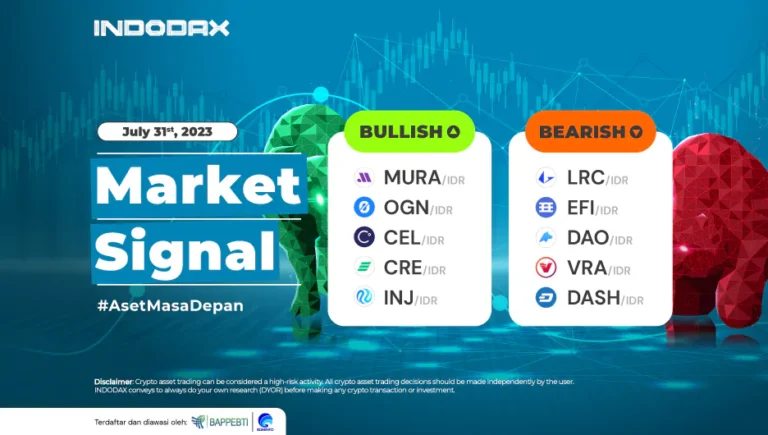Among investors in the capital market, one familiar term is IPO (Initial Public Offering). IPO itself is one way for companies to gain additional capital from the public (public).
The IPO occurs when a private company sells its shares to the public through market capital. In terms of business, an IPO will allow companies to obtain capital to expand.
Apart from IPO, there is also the term ICO which stands for Initial Coin Offering. ICO is when a blockchain-based project sells crypto tokens to investors.
ICO is used by projects that use blockchain technology, for example, crypto projects. This differentiates it from an IPO, usually associated with a stock offering.
So, to better understand an IPO’s meaning, purpose, mechanism, and how it differs from an ICO, see the full review below.
Definition of IPO

As mentioned earlier, IPO stands for Initial Public Offering. In Indonesian, an IPO can be interpreted as an “Initial Public Offering of Shares.”
An IPO is when a company, for the first time, makes an offering of shares or takes the floor on the stock exchange and is sold to the public at large.
IPO also signifies a change from a closed private company to a public company (Tbk) so IPO is also often termed “go public.”
In IPO shares, funds will be received from the public who buy shares issued by the company, while the corporate public will become the company’s shareholders.
In general, IPOs will take place when stock market conditions are quite conducive, and the company is growing, but they need funds to expand and to meet business operational costs.
IPO goals
After understanding the meaning of IPO, now is the time to find out the purpose of an Initial Public Offering. This is important to understand, especially for investors interested in buying shares of companies about to go public.
As explained earlier, an IPO is a process in which a company sells its shares to the general public for the first time through the open stock market, and one of its main objectives is to raise new capital for the company.
This new capital is important for companies to support growth, reduce debt, increase transparency, and provide liquidity to initial shareholders.
Therefore, an IPO is an important step in developing a company that can open doors for new opportunities and helps companies achieve long-term goals.
In addition to obtaining new capital, an IPO will provide several other benefits for companies that go public and their shareholders, namely increasing the company’s profile and creating liquidity.
Raising a company’s profile through an IPO will gain a deeper view of the market and raise its profile among investors, analysts, the media, and the general public.
Furthermore, the IPO also helped create liquidity for shareholders, especially initial shareholders, including founders, venture capital investors, and employees.
In this case, before the IPO, the company’s shares may have limited liquidity, making it difficult for shareholders to sell shares easily. Still, after the IPO, the company’s shares can be sold more easily on the open stock market.
IPO mechanism

Do you already know what the purpose of an IPO is? Now is the time to find out the mechanism or workings of the Initial Public Offering. This understanding is important for investors to make wiser investment decisions later.
Note the IPO process involves a series of complex steps and involves various parties. The following is the IPO mechanism that needs to be known, including:
1. Selection of Advisors
Usually, a company wishing to conduct an IPO will choose a financial advisory bank as the main advisor. This advisor will assist the company in planning and executing the IPO process.
2. Stock Price Protector
The next important stage in the IPO process is buying the share offering price from the lead adviser and the company’s management.
In this regard, they will conduct a comprehensive analysis and assessment of the company to determine a fair price for its shares, usually based on evaluating its value, business prospects, and others.
3. Prospectus Preparation
The next step is prospectus preparation. The prospectus is a document that contains detailed information about the company and its share offering to the public.
The prospectus contains financial data, business information, risks related to investment, ownership structure, usage funds obtained from the IPO, and other relevant information.
4. Marketing
Next is the marketing stage. The company and its advisors will market the stock offering to potential investors in this phase. At this stage, they will make a presentation to promote the company.
5. Share Offering
If the regulatory authority has approved the prospectus, the final step is for the company to offer shares publicly. This offer can be made as a public (traditional IPO) or a private placement.
It is also important to note that in the IPO process, one of the important stages after the stock offering is registering and trading the company’s shares on the stock exchange.
After the share registration, the company’s shares will be issued and traded on the stock exchange. The company’s shares become available for investors to buy and sell on the open market.
Investors can then obtain company shares through a trading mechanism on the stock exchange, for example, through a stockbroker or electronic trading platform connected to the exchange.
Difference between IPO and ICO
As mentioned above, besides the Initial Public Offering (IPO), other terms must be known, especially by prospective crypto investors, namely ICO or Initial Coin Offering.
ICO is a fundraising method used by crypto projects to raise capital by selling digital tokens to investors. ICO operates within the crypto ecosystem, while IPO applies to traditional companies.
In a nutshell, ICO is the issuance and sale of new digital tokens or crypto coins to investors with the main aim of raising the necessary funds to finance the development of crypto projects.
Therefore, ICO and IPO have the same goal: raising funds. However, the two also have some key differences, including:
1. The assets offered
The first difference is in the assets offered. In an IPO, a company that goes public will offer shares to investors, whereas in an ICO, a crypto project will offer digital coins or tokens.
2. Regulation
Regarding regulations, IPOs are known to be subject to strict rules and regulations in traditional capital markets. In contrast, ICO regulations still need to be fully mature and vary in various jurisdictions or legal authorities of a region (country).
3. Media fundraising
As for an IPO, stock offerings are usually made through investment banks or financial advisors who work with the company. On the other hand, ICOs generally use online platforms and social media to raise funds.
4. The nature of the investment
IPOs are considered long-term investments in proven companies operating within the traditional sector, while ICOs are often seen as speculative investments in unproven crypto projects.
Conclusion
In conclusion, IPO stands for Initial Public Offering. In Indonesian, an IPO can be interpreted as an “Initial Public Offering of Shares.”
An IPO is when a company, for the first time, makes an offering of shares or takes the floor on the stock market and is sold to the public at large.
One of the main goals of an IPO is to raise new capital for the company. In addition, the IPO also aims to increase the company’s profile and create liquidity for shareholders.
Meanwhile, the IPO mechanism starts from selecting advisors, determining share prices, preparing prospectuses, and marketing to offering shares.
In addition, IPO and ICO as alternative fundraising options are known to have differences in the assets offered (shares vs. coins or tokens), regulations, fundraising media, and the nature of the investment.
Furthermore, it should also be underlined that it is very important to conduct careful research and obtain a thorough understanding before participating in an IPO or ICO.
This will help to understand risks, evaluate projects, understand legal and compliance aspects, and ensure that investors have invested with a good understanding.








